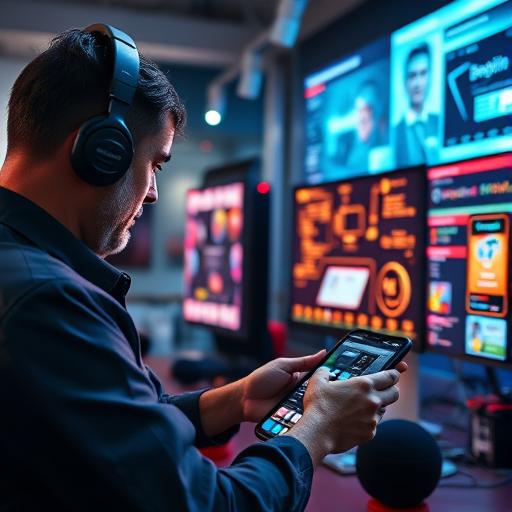In a rapidly evolving tech landscape, Apple has long stood as a beacon of innovation. Known for its groundbreaking hardware and software ecosystems, the Cupertino giant has set its sights on artificial intelligence (AI), a domain it believes will redefine user experiences in the coming decade. While competitors like Google and OpenAI dominate headlines with large language models and AI-driven search tools, Apple’s approach to AI appears characteristically different: less about the buzz and more about seamless integration.
Table of Contents
The Subtle Emergence of Apple AI
Unlike many of its Silicon Valley counterparts, Apple has historically taken a cautious approach to AI, focusing on incremental innovation rather than dramatic unveilings. Siri, its voice assistant, was among the earliest examples of consumer-facing AI, but many have critiqued it for lagging behind the more advanced capabilities of Google Assistant or Amazon Alexa. However, recent developments suggest Apple is preparing to leapfrog its rivals by embedding AI deeper into its ecosystem.
One significant move was the establishment of a dedicated AI/ML (machine learning) research team led by John Giannandrea, a former Google executive and AI luminary. Under his leadership, Apple has ramped up efforts to refine core technologies such as natural language processing (NLP), computer vision, and on-device learning. These advancements, though less flashy than chatbots, have already begun transforming the way users interact with their devices.
AI in Action: Enhancing the Apple Ecosystem
Apple’s AI initiatives are primarily focused on enhancing user privacy and device performance. Unlike cloud-reliant models that transmit vast amounts of user data to remote servers, Apple’s AI relies heavily on on-device processing. This strategy aligns with the company’s commitment to privacy while reducing latency for real-time applications.
Here’s a look at some key areas where Apple’s AI is making an impact:
- Personalized User Experience:
- The iOS ecosystem now uses AI to adapt features like autocorrect, app suggestions, and Focus Modes to individual user behavior. For instance, the keyboard’s predictive text functionality has grown significantly more accurate, thanks to advancements in on-device machine learning.
- Photography and Video:
- Apple’s computational photography sets its devices apart in the crowded smartphone market. The latest iPhones leverage AI to enhance HDR processing, optimize lighting, and intelligently adjust frame rates for videos. Features like “Photonic Engine” and “Deep Fusion” showcase how AI can transform a mundane photo into a masterpiece.
- Health and Wellness:
- The Apple Watch is another arena where AI shines. Features like heart rate monitoring, blood oxygen level detection, and fall detection rely on machine learning to interpret data in real-time, providing users with actionable health insights.
- Accessibility:
- AI-powered features such as Live Captions, Voice Control, and Sound Recognition make Apple’s devices more accessible for users with disabilities, reflecting the company’s inclusive design philosophy.
The Role of Generative AI
In 2023, reports emerged that Apple was working on its own generative AI model, internally dubbed “Apple GPT.” While specifics remain under wraps, insiders suggest the technology could enhance Siri’s conversational abilities, provide advanced text-based assistance across apps, and even introduce AI-driven creative tools for professionals using Final Cut Pro or Logic Pro.
Generative AI could also revolutionize Apple’s productivity apps like Pages, Numbers, and Keynote. Imagine a world where AI not only suggests content but actively collaborates with users to create polished presentations or complex data visualizations. While competitors like Microsoft and Google have already begun integrating generative AI into their productivity suites, Apple’s approach will likely emphasize ease of use and deep ecosystem integration.
Privacy: The Cornerstone of Apple’s AI Strategy
A defining characteristic of Apple’s AI endeavors is its unwavering focus on user privacy. While companies like Meta and OpenAI have faced scrutiny over how they handle data, Apple’s commitment to “privacy by design” offers a competitive advantage.
For example, the Neural Engine in Apple’s A-series and M-series chips enables advanced AI computations directly on the device, minimizing the need for data transmission. Features like on-device Siri processing and differential privacy ensure user data remains secure, even as AI capabilities expand.
Challenges on the Horizon
Despite its many strengths, Apple’s AI journey is not without challenges. Critics argue that the company’s “secretive” approach to development could hinder its ability to attract top talent in a field that thrives on open collaboration. Additionally, as generative AI gains mainstream traction, Apple may need to address growing expectations for transparency around its models and algorithms.
Another hurdle lies in scaling AI capabilities across its vast product lineup. With billions of active devices, ensuring consistent performance and user experience—whether on an entry-level iPad or a high-end MacBook Pro—will be no small feat.
Looking Ahead: The Future of Apple AI
Apple’s foray into AI signals not just a technological shift but a philosophical one. The company’s vision seems to prioritize enhancing user experiences in subtle, almost invisible ways, rather than showcasing flashy, standalone AI products. By integrating AI across its ecosystem—from Siri to HealthKit to Pro applications—Apple aims to make artificial intelligence an integral, yet unobtrusive, part of everyday life.
As we look to the future, one thing is clear: Apple’s AI strategy is less about leading the race and more about redefining it. Whether through generative AI breakthroughs, enhanced privacy measures, or transformative user experiences, the company is poised to shape the next era of technology—one device, one innovation, and one seamless interaction at a time.
Tech News: What You Need to Know This Week
The tech world is a whirlwind of innovation, disruption, and sometimes, just plain weirdness. Keepin…
Technology Science: Where Innovation Meets Discovery
Technology and science are intrinsically linked, a dynamic duo driving progress and shaping our worl…
Riding the Wave: Emerging IT Trends Shaping the Future
The world of Information Technology is a relentless tide, constantly crashing against the shores of …


